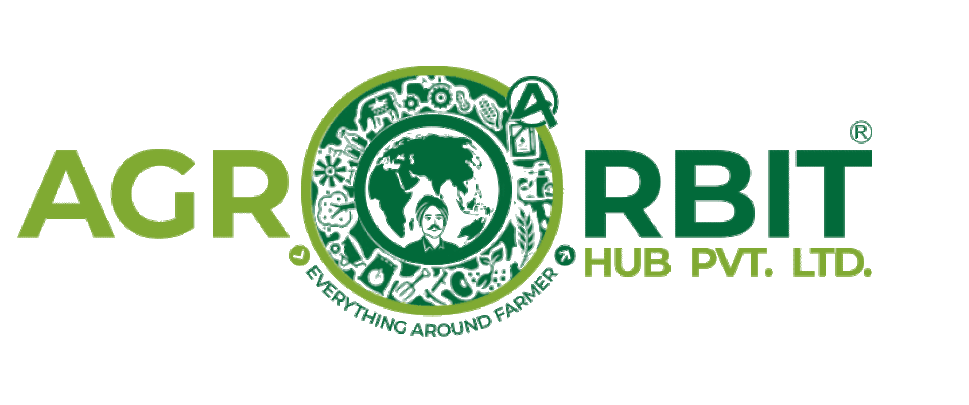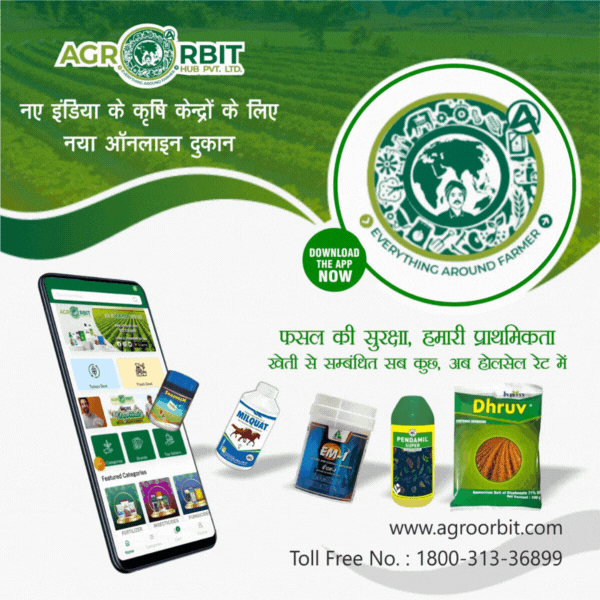

Unlocking Crop Potential with Merivon®: A Comprehensive Overview
Unlocking Crop Potential with Merivon
In the realm of modern agriculture, safeguarding crops against fungal
diseases stands as a pivotal challenge for farmers worldwide. BASF, a stalwart
in agricultural innovation, presents Merivon®, a formidable fungicide designed
to empower farmers with enhanced disease control and crop vitality. Let's delve
into the features, benefits, mode of action, recommended usage, and the
transformative impact of Merivon® in agricultural practices.
Introducing Merivon: Merivon® represents a groundbreaking amalgamation
of two potent active ingredients, Fluxapyroxad and Pyraclostrobin, in a
Suspension Concentrate (SC) formulation. This innovative blend epitomizes
BASF's commitment to agricultural excellence, offering farmers a powerful tool
to combat a spectrum of fungal diseases plaguing crops.
Technical Composition: Merivon boasts a formidable concentration of
Fluxapyroxad at 250 g/L and Pyraclostrobin at 250 g/L, ensuring unparalleled
efficacy against a myriad of fungal pathogens. This unique formulation
underscores BASF's dedication to delivering cutting-edge solutions for modern
agricultural challenges.
Features and Benefits:
Features:
Targeted Disease
Control: Merivon exhibits exceptional efficacy against prevalent fungal
diseases, including Powdery Mildew in grapes and Premature Leaf Fall &
Alternaria Leaf Spot in apples.
Benefits:
1.Broad-Spectrum
Disease Control: Merivon provides comprehensive protection against a wide range of
fungal diseases that commonly afflict crops. This broad-spectrum efficacy
ensures that farmers can effectively combat various pathogens, including but
not limited to powdery mildew, rust, leaf spots, and blights. By targeting
multiple types of fungi, Merivon helps maintain optimal crop health and
productivity, reducing the risk of yield losses due to disease outbreaks.
2.Accelerated and
Prolonged Disease Control: One of the key advantages of Merivon® is its ability
to deliver rapid and sustained disease control. Upon application, its active
ingredients work swiftly to suppress fungal growth and proliferation, thereby
curtailing the spread of diseases within the crop canopy. Moreover, Merivon®
offers prolonged protection, with its effects lasting throughout the critical
stages of crop development. This prolonged control not only safeguards the
current yield but also ensures continued crop resilience, contributing to
overall farm sustainability.
3.AgCelence®
Advantage: Merivon® incorporates the renowned AgCelence® technology, which confers
numerous benefits to crops beyond disease control. This innovative technology
enhances various physiological processes within the plant, leading to
improvements in fruit quality, yield, and overall crop performance. By
leveraging the AgCelence® advantage, farmers can expect to harvest produce with
superior taste, appearance, and nutritional value. Additionally, enhanced crop
vigor and stress tolerance translate to increased market competitiveness and
profitability for growers.
4.Extended Duration of
Action: Merivon® stands out for its extended duration of action, attributable
to the unique mode of action of its active ingredients. Unlike conventional
fungicides that may lose efficacy over time or with repeated applications,
Merivon® continues to provide robust protection against pathogens throughout
the growing season. This sustained efficacy is critical for ensuring continuous
disease management and minimizing the need for frequent reapplications, thereby
optimizing resource utilization and reducing operational costs for farmers.
Mode of Action: The efficacy of Merivon stems from the remarkable properties of Xemium®, one of its active ingredients. Xemium® is swiftly absorbed and evenly distributed within plant tissues, facilitating continuous action against fungal pathogens. This systemic mode of action ensures consistent disease control and sustained crop protection, setting a new standard in agricultural fungicides.
Recommended Usage: Farmers can harness the full potential of Merivon® by
adhering to recommended dosage and application rates tailored for various crops
and target diseases. Here's a concise guide:
1.Crop Compatibility: Merivon is suitable for application across a diverse range of crops, including but not limited to tomatoes, cucumbers, apples, grapes, and mangoes. Its broad-spectrum efficacy makes it an effective solution for controlling fungal diseases in these crops.
2.Apples: For apple orchards, Merivon offers
protection against diseases such as Alternaria, Marssonina Leaf Fall, or Fruit
Blotch. The recommended dosage is 30 ml of Merivon® per 200 liters of water.
This solution should be applied with a pre-harvest interval (PHI) of 29 days to
ensure compliance with regulatory requirements and to allow for residue
degradation before harvest.
3.Grapes: In vineyards, Merivon is effective
against Powdery Mildew, a common fungal disease affecting grapevines. To combat
Powdery Mildew, farmers should apply 40 ml of Merivon® per 200 liters of water.
It is essential to adhere to a PHI of 10 days to ensure the safety of harvested
grapes for consumption.
4.Mango, Cucumber,
Chilli, Tomato: Merivon provides tailored recommendations for each of these crops,
considering specific target diseases and regulatory requirements. Dosages range
from 30 to 100 ml of Merivon® per 200 liters of water, depending on the crop
and the severity of the disease. PHI varies accordingly, ranging from 7 to 38
days, allowing sufficient time for residue degradation and ensuring compliance
with food safety standards.
By following these recommended dosage and application guidelines,
farmers can harness the full potential of Merivon® to effectively control
fungal diseases and protect their crops. Adhering to specified PHI ensures that
harvested produce meets regulatory standards for pesticide residues,
safeguarding consumer health and ensuring market access. Additionally, tailored
recommendations for different crops and diseases enable farmers to optimize the
use of Merivon® based on their specific needs and crop management practices.
1.Dosage: The recommended dosage of Merivon® typically ranges from 40 to 100 ml per acre, with variations based on the type of crop and the severity of the disease infestation. This dosage range is designed to provide effective control of fungal pathogens while minimizing the risk of phytotoxicity or residue buildup on crops.
•Crop Type: Different crops may require varying
dosages of Merivon® based on their susceptibility to diseases and their
physiological characteristics. For example, crops with dense foliage or high
susceptibility to certain diseases may require higher dosages for optimal
control.
•Severity of Disease: The severity of the disease outbreak also
influences the dosage of Merivon® needed for effective control. In cases of
severe infestation or widespread disease pressure, higher dosages may be
necessary to achieve adequate suppression of fungal pathogens.
2.Application Method: Merivon offers flexibility in application methods,
allowing farmers to choose between foliar spray and soil drench techniques
based on their specific disease management strategies and crop requirements.
Each application method offers distinct advantages and considerations:
•Foliar Spray: Foliar spraying involves applying
Merivon directly to the foliage of the crop using a sprayer. This method
allows for efficient coverage of plant surfaces, ensuring thorough distribution
of the fungicide and effective contact with fungal pathogens. Foliar spraying
is particularly suitable for controlling diseases that primarily affect
above-ground plant parts, such as leaves, stems, and fruits. It is essential to
apply Merivon® evenly and at the recommended dosage to achieve optimal disease
control without causing phytotoxicity.
•Soil Drench: Soil drenching involves applying Merivon to the soil around the base of the plants, allowing the fungicide to be taken
up by the roots and translocated throughout the plant. This method is
advantageous for controlling soil-borne pathogens or diseases that affect
below-ground plant parts, such as roots and tubers. Soil drenching provides
systemic protection against fungal infections, enhancing the plant's ability to
resist diseases and promoting overall crop health. Proper application depth and
timing are crucial for ensuring effective uptake of Merivon® by the roots and
maximizing its efficacy in disease management.
Transformative
Impact : By integrating Merivon into their crop
protection arsenal, farmers embark on a transformative journey towards
sustainable agriculture. Merivon® not only safeguards crops against fungal
diseases but also enhances crop quality, resilience, and market value. Its
innovative formulation, backed by BASF's expertise and research, empowers
farmers to achieve maximum crop potential while ensuring environmental
sustainability and profitability.
Conclusion: In conclusion, Merivon emerges as a
beacon of innovation and resilience in modern agriculture, offering farmers a
potent solution to combat fungal diseases and unlock the full potential of
their crops. With its unparalleled efficacy, extended duration of action, and
AgCelence® advantage, Merivon® stands poised to revolutionize crop protection
practices and usher in a new era of agricultural prosperity.
By embracing Merivon, farmers embrace excellence, sustainability, and the promise of a bountiful harvest for generations to come.
Note : This research is based on google we are not responsible for any other circumstances.







